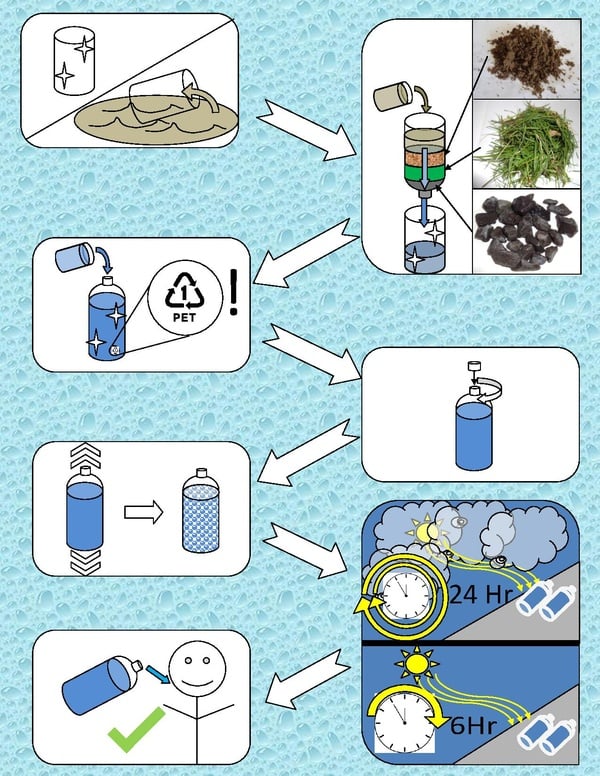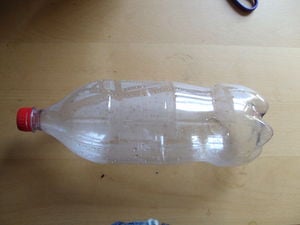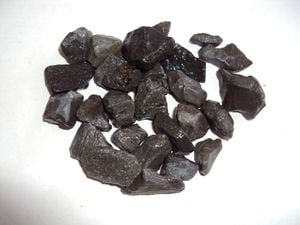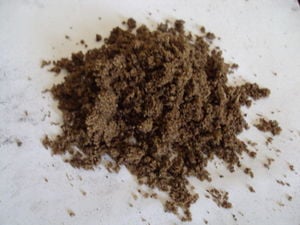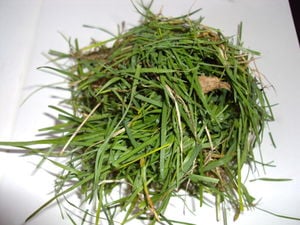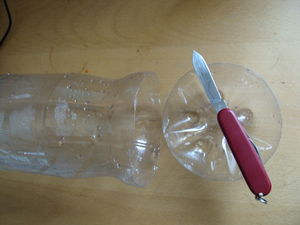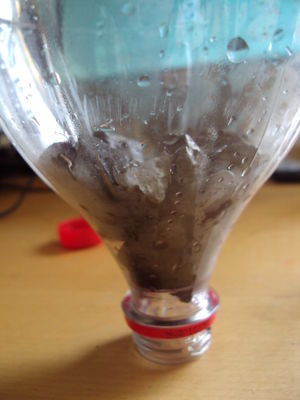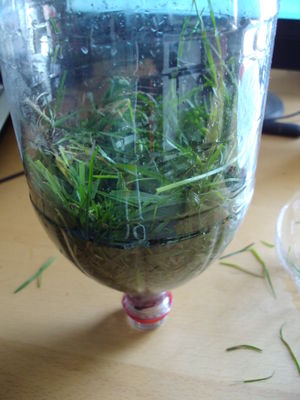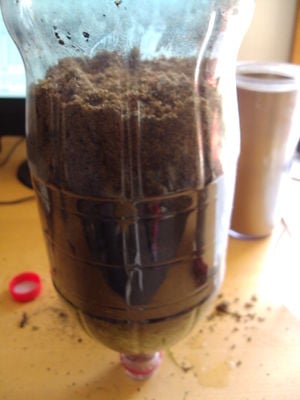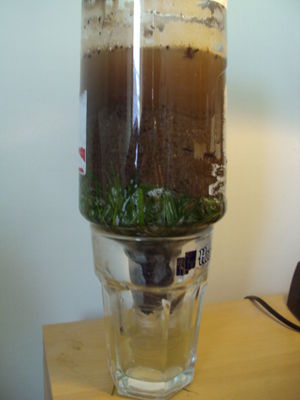This project aims to design, create, test and evaluate a zero cost solar disinfection (SODIS) water purification method which could help provide safe drinking water to those who do not have access to clean water sources. The end goal is a simple, language-free document which could be distributed to people in third world countries, in a format which is easy to understand, and a design which is simple and easy to manufacture with little to no cost.
The design presented will be for a single cell of the system, which could easily be set up in parallel for higher water purification rates. A larger version of the single cell could also be created if the materials are available, again allowing for higher rates of water purification.
Download the Language-free Clean Water Guide:
The Guide summarizes this article in a one page, language-free medium which could hopefully be understood by anybody on the planet.
Ideally, this guide, or a similar guide, could be included on data packages intended for third world countries.
Problem Definition[edit | edit source]
Currently, 1.6 million people die every year from diarrhoeal diseases, 90% of these cases being children under the age of 5. An additional 160 million suffer from schistosomiasis, 500 million are exposed to trachoma, and 133 million are suffering from serious helminths, and 1.5 million are diagnosed with hepatitis A each year. These are just a portion of people who suffer from lack of access to clean drinking water.[1][2]
Clearly there is a huge problem here, and access to a safe source of drinking water could alleviate the suffering which affects so much of the third world. For a solution to be feasible and realistic, it must be very inexpensive, or preferably cost free. It should also be simple to manufacture, use, and maintain.
Objectives[edit | edit source]
The goal for this project is to design an efficient and effective method for the purification. The first stage of purification should remove the majority of particulate matter found in the water, and the second stage must kill the majority of the harmful microbial organisms.
The main goal of this project however is to clearly and concisely present the design in its entirety in a language-free medium which can easily be understood by anybody in need of safe drinking water.
Theory[edit | edit source]
Roughly speaking, this filter method works by first removing particulate matter by way of a filtering media, and then by destruction of harmful microorganisms through UV radiation and thermal radiation provided by sunlight. These two stages are discussed below.
Particulate Removal[edit | edit source]
The basic theory behind removing particulate matter (such as dirt, sand, etc.) from water is to pass it through a medium which has a pore size smaller then the size of the smallest particulate matter, thereby trapping it in the filter medium. Commercially available filters can be purchased with pore sizes down to roughly.01 microns in diameter, which will remove most viruses, and all bacteria from drinking water.
It is possible to create a very basic filter membrane using naturally available materials such as grass, sand and gravel.
Filter membranes however, by nature of their operation, become clogged overtime and have greatly reduced flow rates. This means that overtime the filtermedia must be replaced or cleaned to ensure a reasonable filter rate. The need for cleaning or replaceing the filter material is dependent on the size of the filter, the type of filter media, and largely on the levels of particulate matter being filtered out of the water per unit volume.
SODIS[edit | edit source]
Solar disinfection (SODIS) is a method by which microbial organisms can be destroyed by using a range of wavelengths of light found in direct sunlight, mainly UV-A radiation (400nm-315nm)[3] in combination with the thermal radiation from the sun which raises the temperature of water, speeding up the disinfection process dramatically.
A Wide variety of information on the SODIS method can be found here.
Common Diseases[edit | edit source]
A wide range of harmful microorganisms exist in impure drinking water, and SODIS has been found to be effective against a wide variety of parasites, bacteria and viruses. An extensive list can be found here.
Design Considerations[edit | edit source]
SODIS is a water purification technique which is dependent on a small number of essential factors, both material and environmental. Luckily however, a good majority of those in the third world likely have access to these necessities.
Environmental[edit | edit source]
SODIS is directly reliant on two environmental factors, heat and direct sunlight, which work in unison to destroy potentially harmful microorganisms found in impure drinking water. The higher the temperature and the more direct the sunlight, the more effective this method will be.
Material Availability[edit | edit source]
SODIS is also heavily reliant on material availability, both for filtering and for the SODIS treatment. The true limiting factor is access to clear PET bottles which are ideally suited for SODIS application. If PET bottles are available, the rest of the system can be redesigned around available materials. In some cases, if non-turbid water is available, there may be no need for the filtering process.
Cost[edit | edit source]
This system was designed to be of no cost to the user; however this depends largely on the material availability. Regardless, the most expensive component of the system is the PET bottles, which are relatively inexpensive to purchase.
Design[edit | edit source]
The design presented below is for a single cell of this infinitely expandable system.
Materials Needed[edit | edit source]
Tools Needed[edit | edit source]
- Any sharp edge (knife, scissors, sharp sheet metal, etc)
Construction[edit | edit source]
The only construction needed for this system is to build the layers of the filter. This is assumed to be self explanatory in the Distributed guide.
Cost[edit | edit source]
I had zero cost in the construction of my purification system. All materials should hopefully be available from natural sources and garbage dumps. If no PET bottles can be found, they are somewhat readily available as they are used to hold a wide variety of beverages and liquids. Two (2) litre pop bottles are ideal as they are quite large and are made almost exclusively from PET.
Use[edit | edit source]
- Collect water from cleanest available source. If only extremely murky water is available, let stand overnight to allow settling. If rainwater is available, collect this.
- Pour water through filter and collect filtered water in a clean container. Repeat until water is as clear as possible.
- Pour filtered water into PET bottle and secure lid, leaving room for air at the top of the bottle.
- Shake PET bottle to oxygenate the water as much as possible.
- Place PET bottles in direct sunlight, preferably on a southern facing sloped surface with a reflective heat absorbing covering. Sheet metal roofs are the ideal location for this, however this is not necessary.
- Allow bottles to remain in sunlight for between 6 hours(direct sunlight and warm or hot temperature) and 24 hours(under overcast conditions with little heat).
- Drink water directly from PET bottles, or from a previously disinfected container. A contaminated container will render all the above steps completely useless!
- Keep PET bottles clean, and repeat procedure, maintaining filter as needed and replacing any damaged or heavily scratched PET bottles.
Testing[edit | edit source]
Testing was done to ensure that a simple filter, as described above, could reduce turbidity to an acceptable value of roughly 30 NTU as stated by SODIS[4]
-
1.Turbid Water to be Filtered
-
2.Assembled Charcoal Filter
-
3.Filtering
-
4.After Multiple Passes
Although the filter was effective in removing the majority of particulate matter, the charcoal presented many problems. Even though the charcoal was thoroughly rinsed before being put into the filter, it still released a large amount of carbon into the filtered water, leaving a dark black liquid. Secondly, the charcoal absorbed large amounts of water and reduced the flow rate to the point where the filter was not practical.
Flow rate was observed to be roughly 1 liter/hour.
To remediate this, a second filter was constructed without a layer of charcoal. The turbid water was also prefiltered to remove large debris from the water. This test can be seen below.
-
1.Turbid Water to be Filtered
-
2.Prefiltering with old cloth
-
3.Assembled Filter
-
4.Filtering
-
5.After Only One Pass
As can be seen, the second filter method was much more effective in reducing the turbidity of the water. In only one pass it brought the turbidity level to roughly 30 NTU, which allows for effective SODIS treatment with 6 hours of exposure to direct sunlight.
Flow rate with this new filter was observed to be 6-8 liters/hour. This rate will vary depending on both filter construction and water quality. This water could now be placed in clear PET bottles, and if exposed to direct sunlight for 6 hours, or indirect sunlight for 24 hours, would be safe to consume.
Improvements[edit | edit source]
There are a few methods which will directly increase the performance of this filtration method.
Filtering Improvements[edit | edit source]
Rate of filtration is proportional to the size of the filter, when filtering media and water quality are identical. The larger the diameter of the filtering area, the higher the flow rate through the filter will be. Finding a large suitable container can be difficult, however for a system intended for heavy use, it is highly recommended. This however also introduces the need for more filtering media which may be difficult to acquire in some areas, and also increases difficulties associated with cleaning or replacing old filter media.
Quality of the filter media is also a very important factor. The finer the pore size, the more effective the filter will be at removing particulate matter. This however will reduce the flow rate further, as the flow rate is dependent on the pore size.
Thickness of the filter media will also increase the amount of filtration and potentially reduce the need for repeated filtering. However it will also increase the amount of time needed for the water to run through the filter, and will also increase the amount of filter media needed, as well as the weight of the filter.
Pre-filtering the water through cloth or old clothing will reduce the buildup in the filter, and will increase filtering speed and effectiveness.
SODIS Improvements[edit | edit source]
SODIS can be improved by increasing the two factors which it relies upon, sunlight and temperature.
The effectiveness of direct sunlight can be dramatically increased by decreasing the thickness of the level of water being purified. Research shows the the sun is roughly 50% less effective at a water depth of 10cm. By reducing the thickness of the water being treated you can improve the performance of the SODIS dramatically.
You can also increase the effectiveness by placing the bottles on a reflective surface, which will increase the intensity of sunlight passing through the water. This can be done by using reflective metals such as tinfoil, old pop cans, etc.
To increase the temperature of the water, the bottles can be placed on a surface which has a high heat capacity. Pavement, tar, black shingles and sheet metal roofs are all good options.
Installation[edit | edit source]
Little to no installation is needed for this system, as it is not permanent and therefore has no ties to a specific area. This system can be used during travel or in a stationary environment such as at one's permanent residence. A large scale system could be designed by increasing the number of cells
Maintenance[edit | edit source]
To keep this system functioning at its full potential, the filter and the SODIS bottles must be kept in good condition.
The following must be kept in mind while using the system.
- Scratched or damaged PET bottles must be replaced as they greatly reduced the amount of UV radiation passed into the water.
- As the filter slows down over time with clogging, it must be taken apart, the sand should be rinsed thoroughly, and the grass should be replaced. Filter maintenance should be done as needed.
- System should be upgraded as outlined above when material availability allows.
Limitations[edit | edit source]
It must be stressed that this water treatment method has some serious limitations. Although SODIS is highly effective against most harmful water micro organisms, it cannot be guaranteed 100% reliable, especially if the method is not properly followed, or if a plastic is used which cannot transmit UVA radiation.
Secondly, SODIS is not effective against heavy metal or chemical pollutants found in water. In areas where there is known chemical contamination of the water, other filtering methods should be used.
References[edit | edit source]
- ↑ World Health Organization, http://web.archive.org/web/20140112140813/http://www.who.int:80/water_sanitation_health/mdg1/en/index.html
- ↑ Wiki, Waterborne Diseases, http://en.wikipedia.org/wiki/Waterborne_diseases
- ↑ Wiki, Ultraviolet, http://en.wikipedia.org/wiki/Ultraviolet
- ↑ SODIS, http://www.sodis.ch/index_EN
